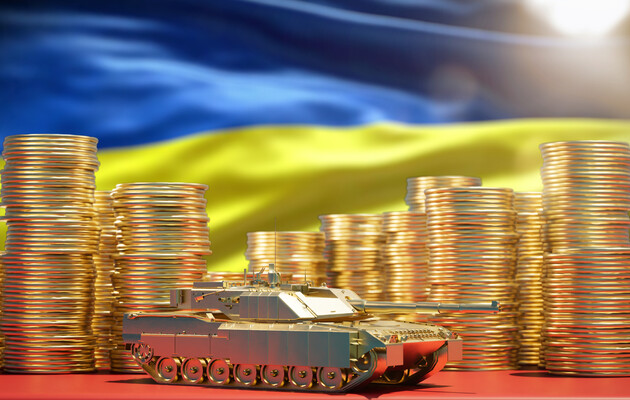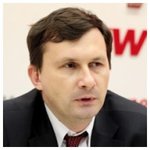Military Footing and Driving Forces of Military Economy
The stability of a country in a drawn-out war is determined primarily by its ability to withstand the enemy’s pressure on the battlefield. However, the longer the war, the more significant are the opportunities of the national economy to provide a proper basis for the Armed Forces, as well as to support the vital activities of the country, which preserves and even strengthens its ability to resist the aggressor.
Ukraine's economy has generally adapted to the new level of security risks, the expectations of both businesses and consumers have settled. Overall, this is exactly what the positive indicators of 2023 show. However, the situation is far from euphoric. In general, the economy has so far reached a certain plateau of adaptation of expectations regarding the risks of war. Due to this, in many cases, the restoration or continuation of activities became possible thanks to the return to pre-war practices both in business and in the behavior of consumers, civil society organizations and state authorities.
In order to continue to maintain the ability to withstand the war of attrition imposed by the Russians, it is necessary to finally understand that a return to most pre-war practices is no longer possible, neither during the war itself, when the country's stability becomes the key task, nor after, when the emphasis is on rebuilding the economy. combined with the realization of the goals of membership in the EU. Therefore, the adaptation of expectations should be followed by the adaptation of the activities of all stakeholders of the national economy to the conditions and, most importantly, to the requirements and tasks of the wartime economy.
2024 is to become the year when the model of the modern military economy will be constructed and tested in real-life conditions. A lot has been said recently about the need to put the economy on a military footing. However, there is still no established vision of what this footing should look like and how the route to the Victory station should be laid.
It is immediately clear that the templates of World War II, especially in the Soviet-Stalinist version, will not work in Ukraine. Currently, our country is confronted with a unique task in world practice: to test the model of a democratic open market economy, which is capable of resisting a much more powerful external aggressor for a long time, maintaining its own stability and relying on large-scale international support. Proving the capability and competitiveness of precisely such a model is the mission of Ukraine and the civilized world community that supports it in an existential confrontation with the anachronistic 20th-century world of autarky and the right of might, which agonizing Russia is seeking to recreate.
A dynamic model of the stability of such an economy on a war footing should achieve the concentration of market mechanisms on the fullest possible realization of the national resource potential for sufficiently strong and long-term stability of the country at war. Military expenditures of Ukraine's budget are currently entirely formed at the expense of its revenues obtained from the stable functioning of the national economy. The stability and durability of this source in time assumes special importance in the conditions of probable interruptions and temporary insufficiency in the receipt of foreign military aid, which some of the experts highlight. As was already the case in 2023, the better-than-forecasted dynamics of the economy may allow the revenue and expenditure parts of the budget to be recalculated, thus increasing the funding of Ukraine’s Defense Forces.
The development of own production of weapons, military hardware and ammunition is an important component of the transition to a military footing. However, here too it is necessary to realize that any significant military production in any region of the country will necessarily turn into a vulnerable target for the aggressor. A split production of parts and small objects (such as drones) should therefore be preferred, while the scale of wartime foreign arms purchases will remain significant. For this, the economy must also stably generate an appropriate financial resource, and optimally it should also be balanced by foreign currency export earnings, in order to avoid a significant deterioration of the trade balance.
Since the full and correct operation of market mechanisms in the conditions of war risks is impossible, a significant responsibility rests on the state policy, which must correct the effects of non-economic risks, specify the priorities for the redirection of financial, material and human resources and, most importantly, be built taking into account the above-mentioned balance between the urgent mobilization of resources and the ability to their long-term generation on the footing of the wartime economy.
A forced significant role of the state in the economy will require additional attention to the evaluation of the effectiveness of state policies, control, prevention of abuses regarding the use of state funds and should be based on the European principle of minimal harm to competition in the case of state intervention and provision of state aid.
2024 may bring a number of systemic risks associated with an insufficiently balanced transition of the economy to a military footing.
The risk of insufficient external financing to fill the budget gap, which is more than $40 billion, is widely discussed. The risk is quite hypothetical, primarily due to the clear position of the European Union regarding the provision of macro-financial assistance and additional commitments to support Ukraine, already announced by a number of countries. In addition, the prospect of using the frozen funds of the aggressor country is already being considered in a practical way. However, in order to receive funds without hindrance, Ukraine will still have to become more active in the completion of anti-corruption infrastructure, practical initiation of reforms that will be provided for by the agenda of European integration, a clearer articulation of the targeted direction of budget funds for responding to the challenges of war — for reconstruction, sustainability and resolving social policy issues.
We believe it is appropriate to point out that certain partial and localized deficits can be compensated by additional (essentially, money issuance) financing of the government by the National Bank of Ukraine in 2022 as an example. This was specially emphasized by the IMF in the updated version of the Memorandum of the current EFF program, rightly recognizing that in this case the damage to the economy will be less than a hard stop of demand due to the sequestration of budget expenditures.
Considering the importance of finding an additional budgetary resource, attempts to additionally increase the fiscal burden on business cannot be ruled out. The main failsafe against this risk should be the preservation of conditions for stable and profitable activities of tax payers, including sufficient demand in the domestic market. We can expect some narrowing of opportunities for tax optimizers, but radical steps, in particular regarding streamlining the use of benefits for non-profit organizations, as well as increasing tax rates, should not be resorted to in a year of active war. It is clear that liberal experiments with taxation should be postponed for the period of post-war recovery.
The economy may face the risk of narrowing domestic consumer demand due to the reorientation of a larger share of expenditures for the purposes of military production. In particular, as a result of the redirection of the “military” personal income tax, which previously fueled demand at the community level. Accordingly, the importance of steps to strengthen the multiplier effect of military expenditures for the economy and expand markets for industrial goods will increase.
It is important that the aforementioned “military” personal income tax, which was done quite justifiably, although not skillfully enough, does not become a trigger for the temptation to further withdraw funds from communities, whose budgets are currently in a better financial condition than the state one. Apart from the negative effect for decentralization and cohesion reform, such a risk can lead to significant practical impairments. After all, communities in wartime have a wide range of role functions in the national system of stability: guaranteeing the smooth functioning of educational and primary healthcare institutions, work with IDPs, as well as the stability and restoration of local infrastructure, etc.
At the same time, the ability of the national economy to respond to potential drivers of economic dynamics, which are quite limited in the conditions of the narrowed resource capabilities of the military economy, must be strengthened. We can single out some of the priority steps, which, in fact, should contribute to the transition of the economy to a military footing.
Together with international partners, first of all the IMF, it is necessary to master modern macroeconomic stability tools that take into account the specific risks of war and do not harm economic dynamics. The recent decision on increased taxation of bank profits is a palliative that does not stop the reproduction of the pyramid of deposit certificates and has practically no effect on unlocking commercial (non-subsidized) lending to the economy. The issue of the ineffectiveness of the domestic banking system may become acute in the near future – possibly as a potential obstacle to receiving international aid, a significant part of which will then settle in bank hyper-liquidity.
It is necessary to use the possibilities of openness of the economy in the conditions of war to the fullest possible extent. First of all, it comes down to foreign trade (with the development of accessible border and cross-border logistics), the attraction of investments (with the spread of insurance against war risks) and international aid (where emphasis should continue to be shifted from humanitarian issues to the task of infrastructure and community sustainability).
Investment and current business expenditure for recovery and sustainability purposes should be maintained. First of all, we are talking about de-mining, restoration of industrial facilities and, if necessary, autonomous water and electricity supply. These costs should be excluded from the tax base; optimally, a compensation mechanism should be introduced (at least in the form of securities secured by the future receipt of confiscated funds of the aggressor).
It is important to maximize the multiplier effect of the state's military expenditures. As for the financial support of servicemen, this will require the inclusion in the financial turnover of funds that are hanging in midair on bank accounts of servicemen. In terms of the purchase of weapons, equipment and other military property, preference should be given to domestic producers, maximum liberalization of production and supply, including military products (lethal dangerous equipment will require modern dynamic control).
The same applies to non-military budget expenditure, which makes up the demand for consumer and industrial goods. The implementation of projects related to the reconstruction and development of infrastructure should continue (largely on the level of local budgets), but with a clear focus on those that are able to launch or encourage private business processes that will continue to function without budget support. Such a selection is quite possible due to the Treasury's approval of expenditures, and the criteria for the selection of projects must be legally approved at the level of the Cabinet of Ministers of Ukraine.
Post-war reconstruction can become one of the growth drivers already at the stage of the war economy. The key to this should be maximum integration of Ukrainian enterprises into the projects, broad involvement of communities in the design and management of recovery, use of territorially oriented stimulants and development of a strategy of interaction within the framework of recovery with foreign partners. The launch of parallel recovery processes in international organizations, government budget projects, regional and local projects, private investments, individual actions of households (on the basis of compensation programs) can significantly increase the ability of the economy to absorb recovery funds, thus increasing the positive impact of recovery on the dynamics of the war economy.
Please select it with the mouse and press Ctrl+Enter or Submit a bug













 Login with Google
Login with Google